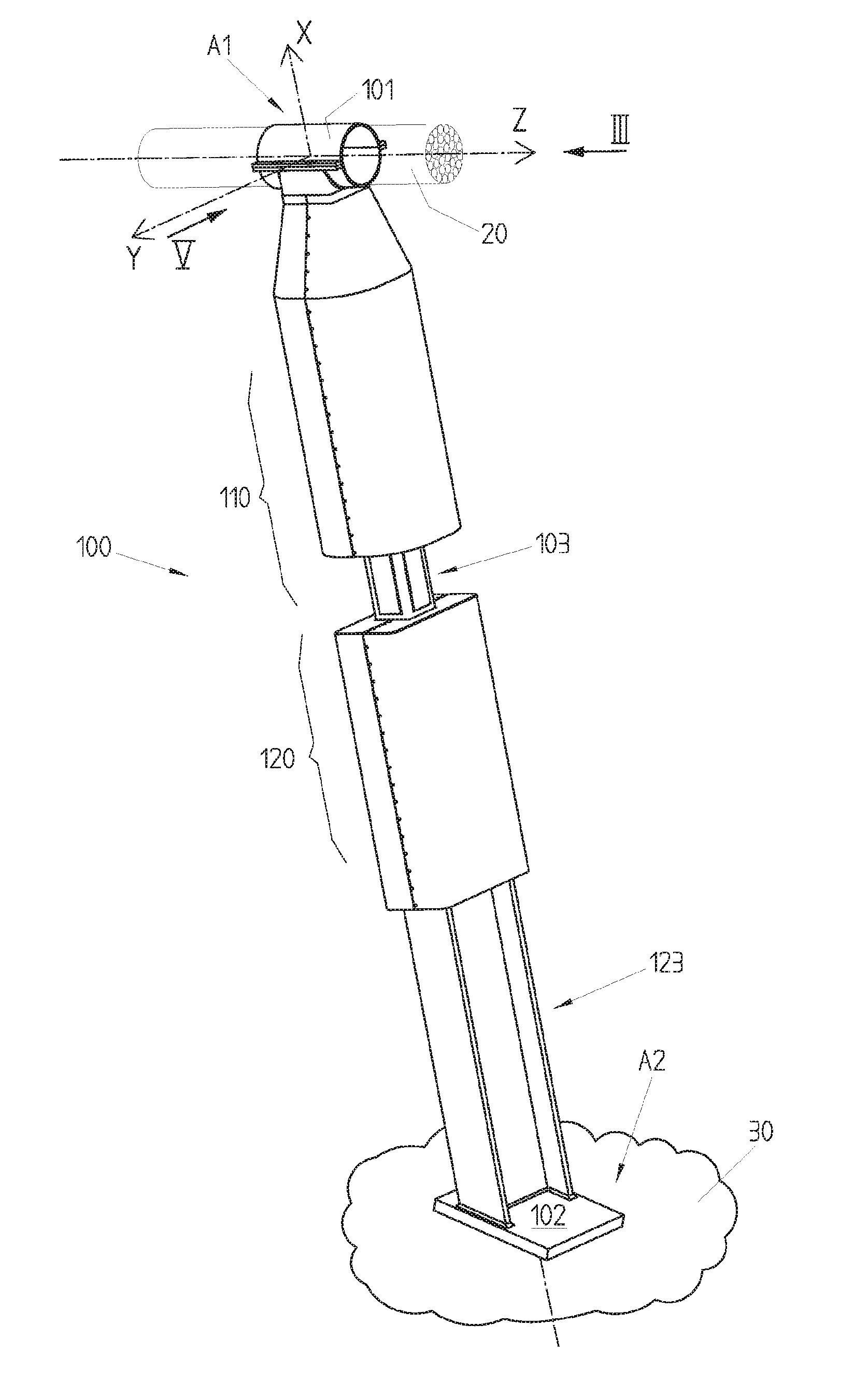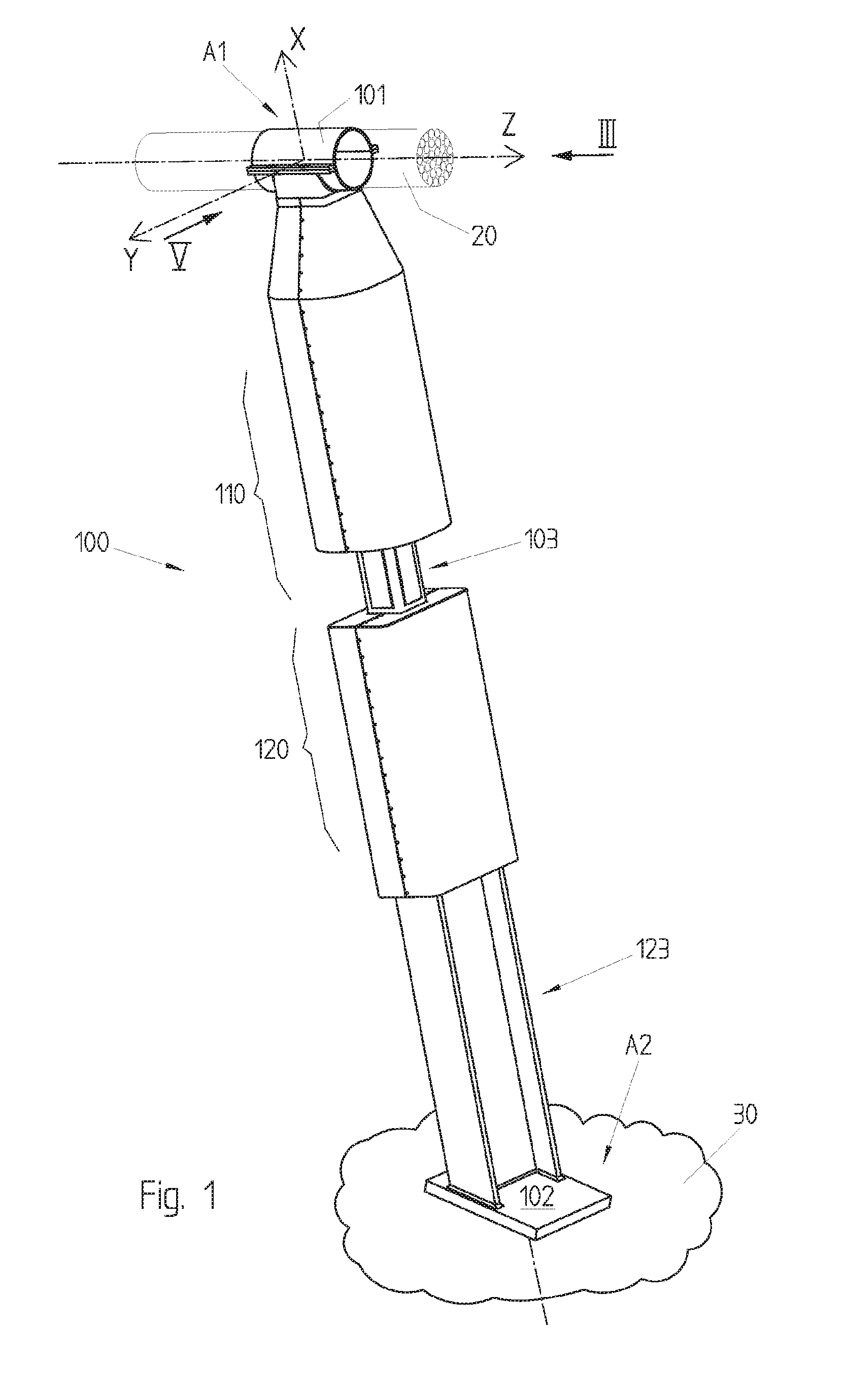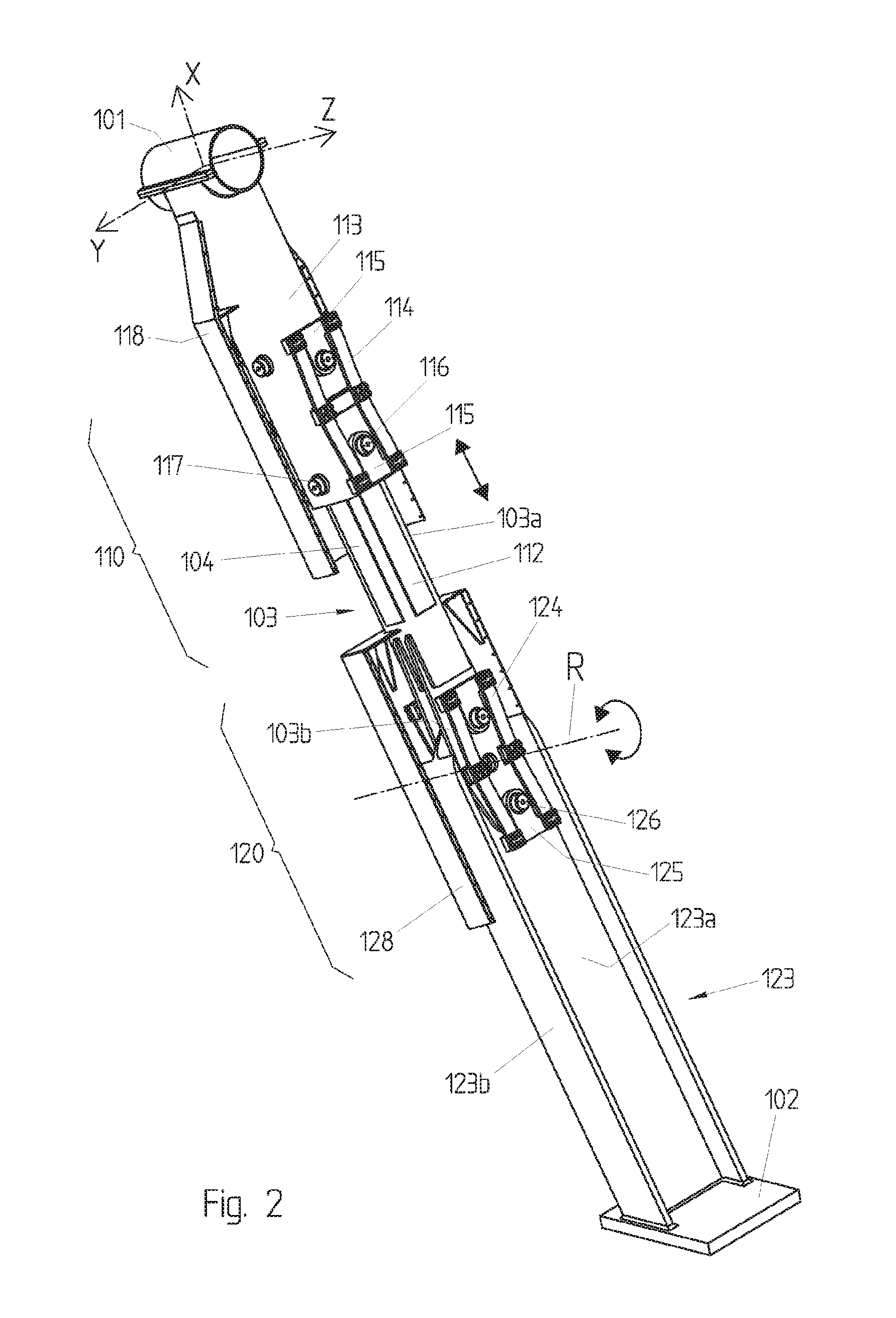Device and method for friction damping
a technology of friction damping and device, applied in the field of civil engineering, can solve the problems of not allowing large-amplitude displacements in all directions to be absorbed, limited fatigue and durability performance, and not suitable for use in structures
- Summary
- Abstract
- Description
- Claims
- Application Information
AI Technical Summary
Benefits of technology
Problems solved by technology
Method used
Image
Examples
first embodiment
[0059]As can be seen in FIGS. 1 and 13, the damping device 100 is mounted in this example between a cable 20 or stay (forming a first structural element) and a second structural element 30, for example a foundation, a slab, the deck of a suspended bridge or else a part mounted integrally with such a deck. The cable can be connected to a pylon or strut (not represented).
[0060]With respect to the cable 20, the damping device 100 is mounted for example by a sleeve 101 enclosing the cable 20 and forming a first anchoring point A1. The sleeve 101 can be fixed relative to the cable or capable of sliding longitudinally along this cable.
[0061]With respect to the foundation 30, the damping device 100 is mounted for example by a mounting flange 102 welded or riveted to the foundation 30 and forming a second anchoring point A2.
[0062]The damping device 100 thus connects the first anchoring point A1 to the second anchoring point A2 along a first direction X corresponding to the longitudinal dir...
third embodiment
[0098]FIG. 15 illustrates a third embodiment wherein a first element 113 of the first damping system 110 is connected in an articulated manner to the sleeve 101 thanks to a shaft 131 (R″) parallel to the axis Y and enabling the element 113 to pivot around the axis Y relative to the cable 20. Furthermore, an element 123 of the second damping system 120 is connected in an articulated manner to the second structural element 30, thanks to a pivot 129 allowing a rotation around the axis R′ parallel to the axis Y and enabling the element 123 to pivot around the axis Y relative to the second structural element 30. Optionally, the sleeve 101 could still move longitudinally along the axis Z parallel to the cable 20. The shaft 131 is optional and preferably non dampened. The shaft 129 is preferably dampened by means of fifth and sixth friction surfaces 132, for example pads, between the element 123 and the stirrup 132 integral with the foundation 30.
[0099]The first element 113 can furthermore...
PUM
 Login to View More
Login to View More Abstract
Description
Claims
Application Information
 Login to View More
Login to View More - R&D
- Intellectual Property
- Life Sciences
- Materials
- Tech Scout
- Unparalleled Data Quality
- Higher Quality Content
- 60% Fewer Hallucinations
Browse by: Latest US Patents, China's latest patents, Technical Efficacy Thesaurus, Application Domain, Technology Topic, Popular Technical Reports.
© 2025 PatSnap. All rights reserved.Legal|Privacy policy|Modern Slavery Act Transparency Statement|Sitemap|About US| Contact US: help@patsnap.com



